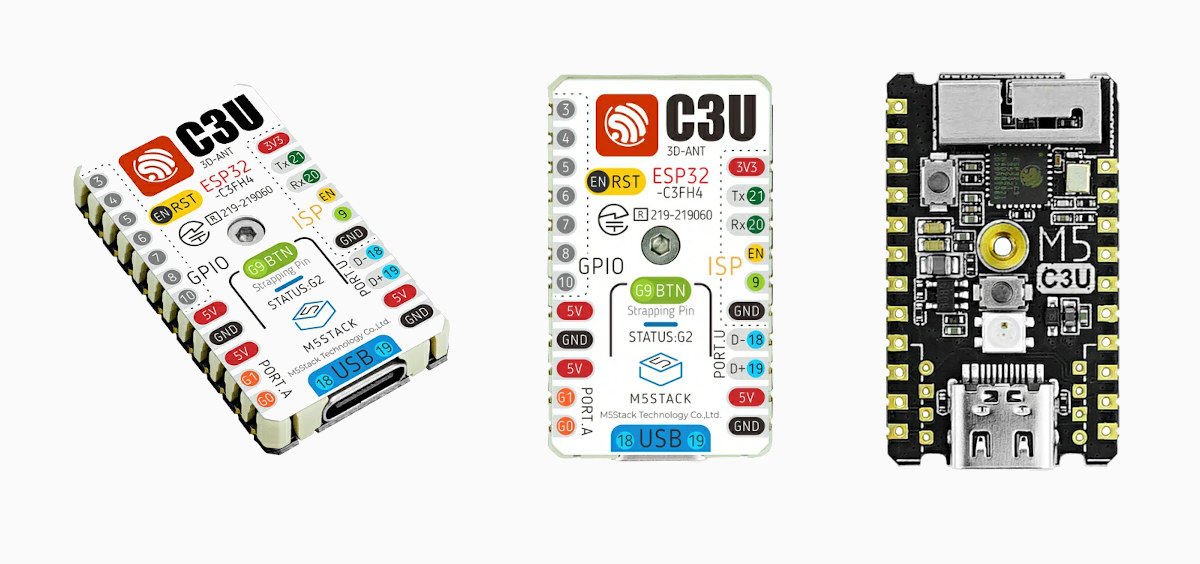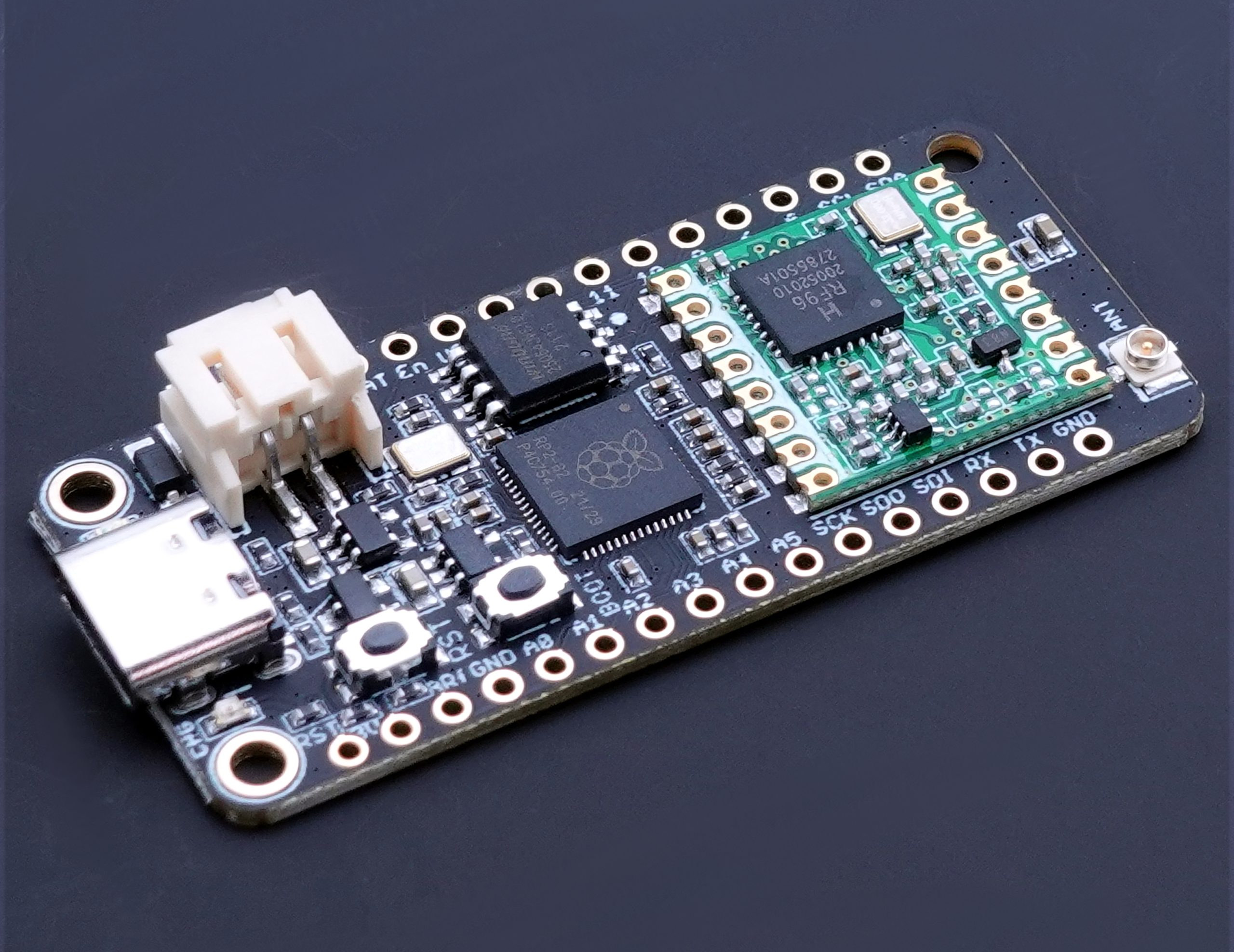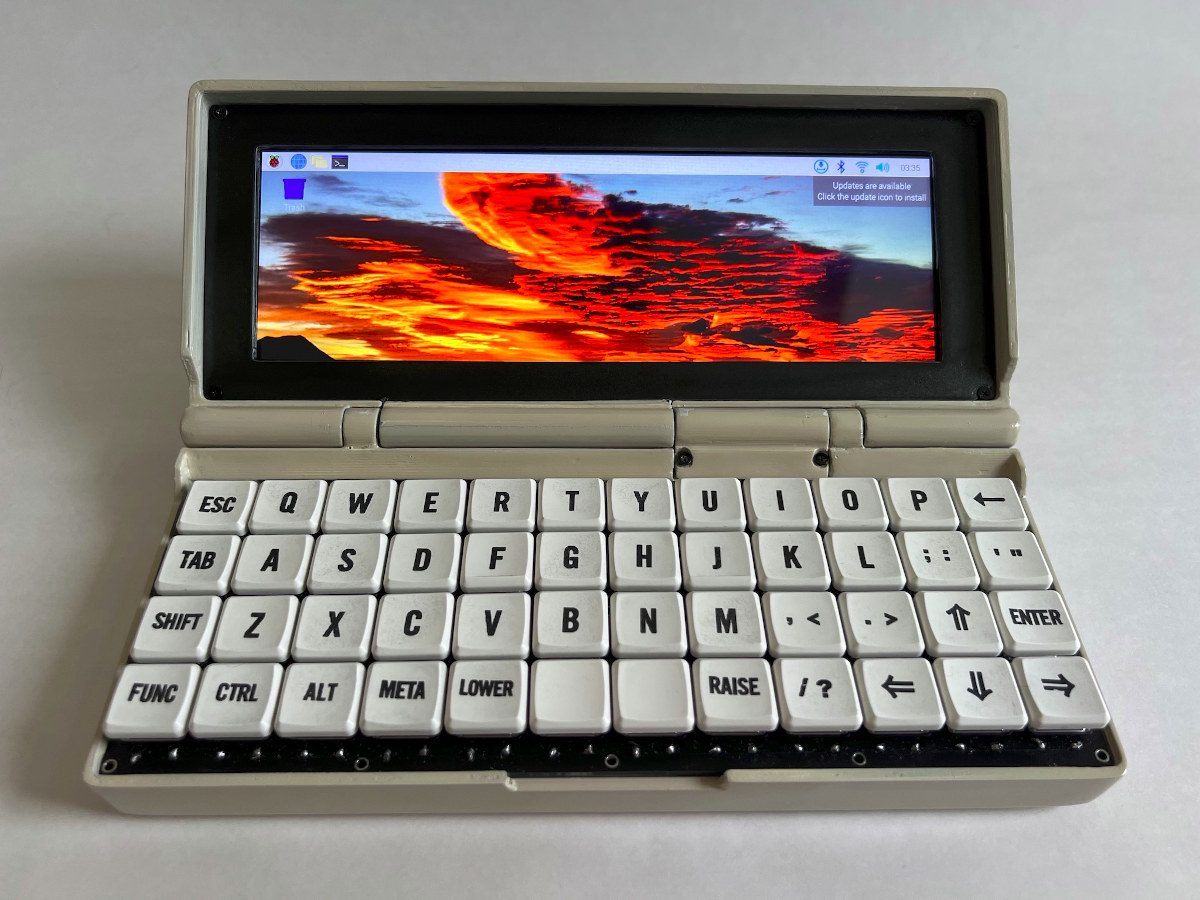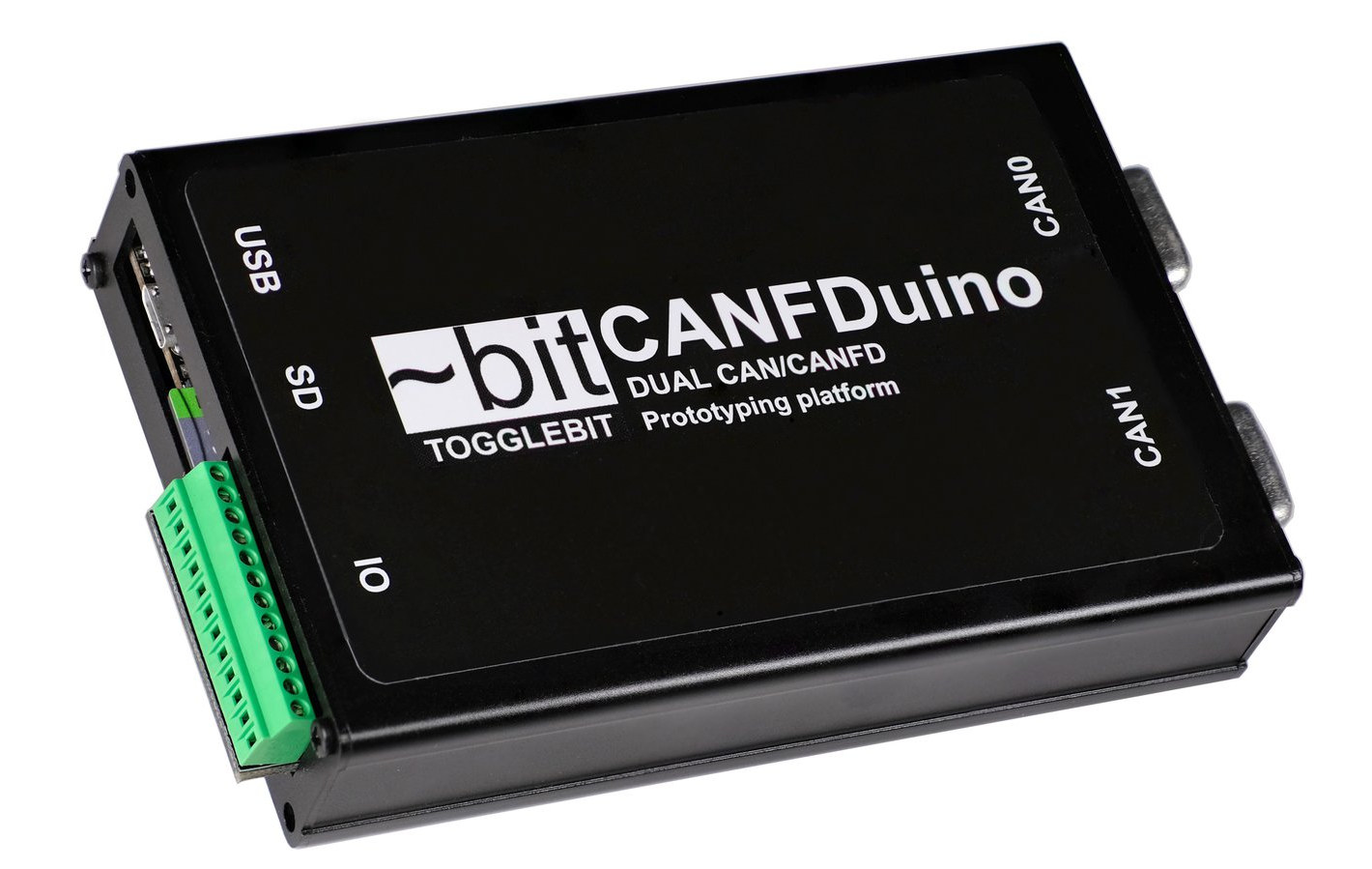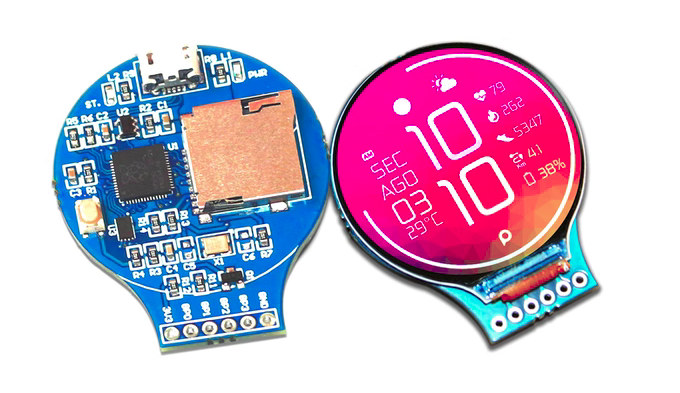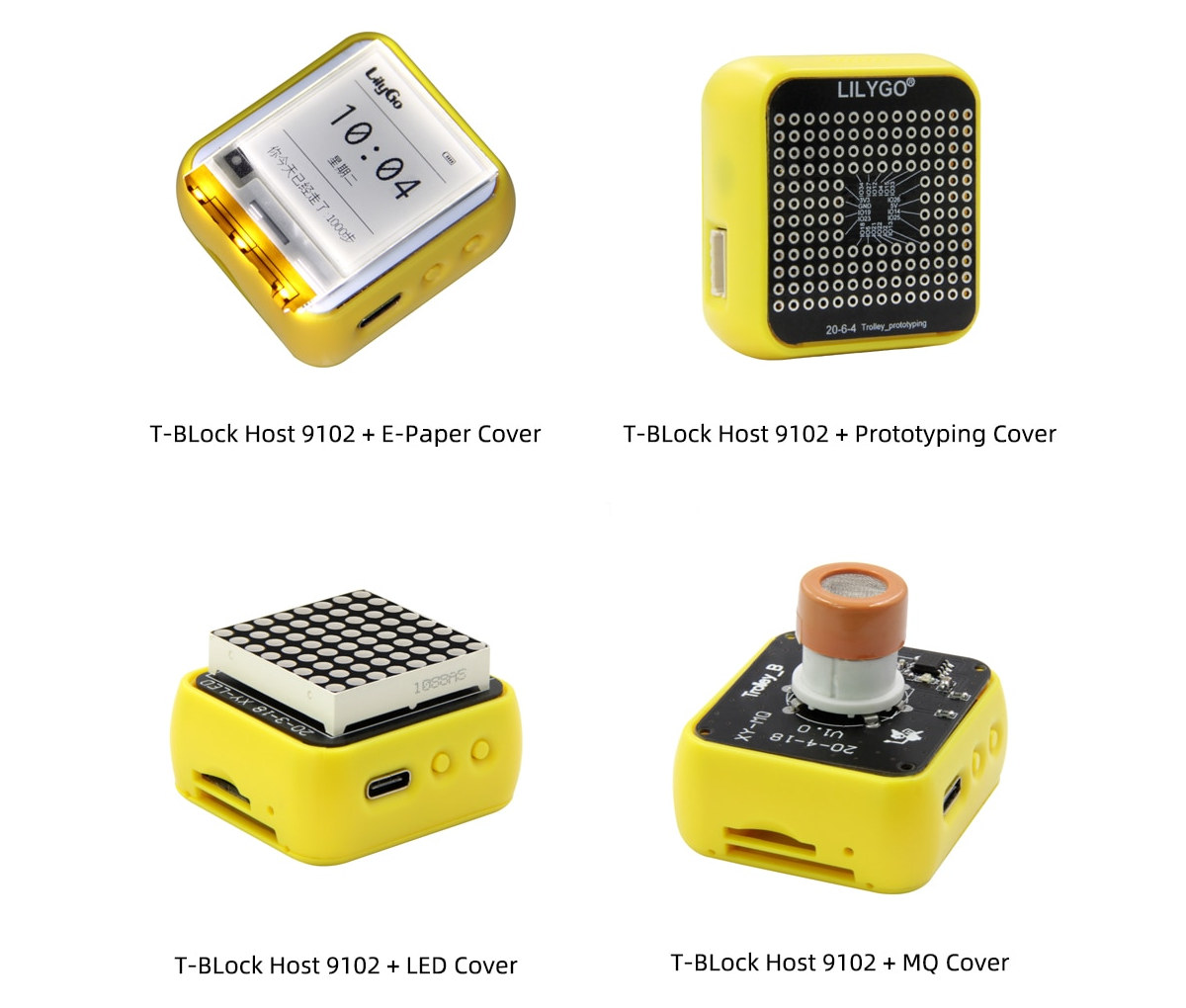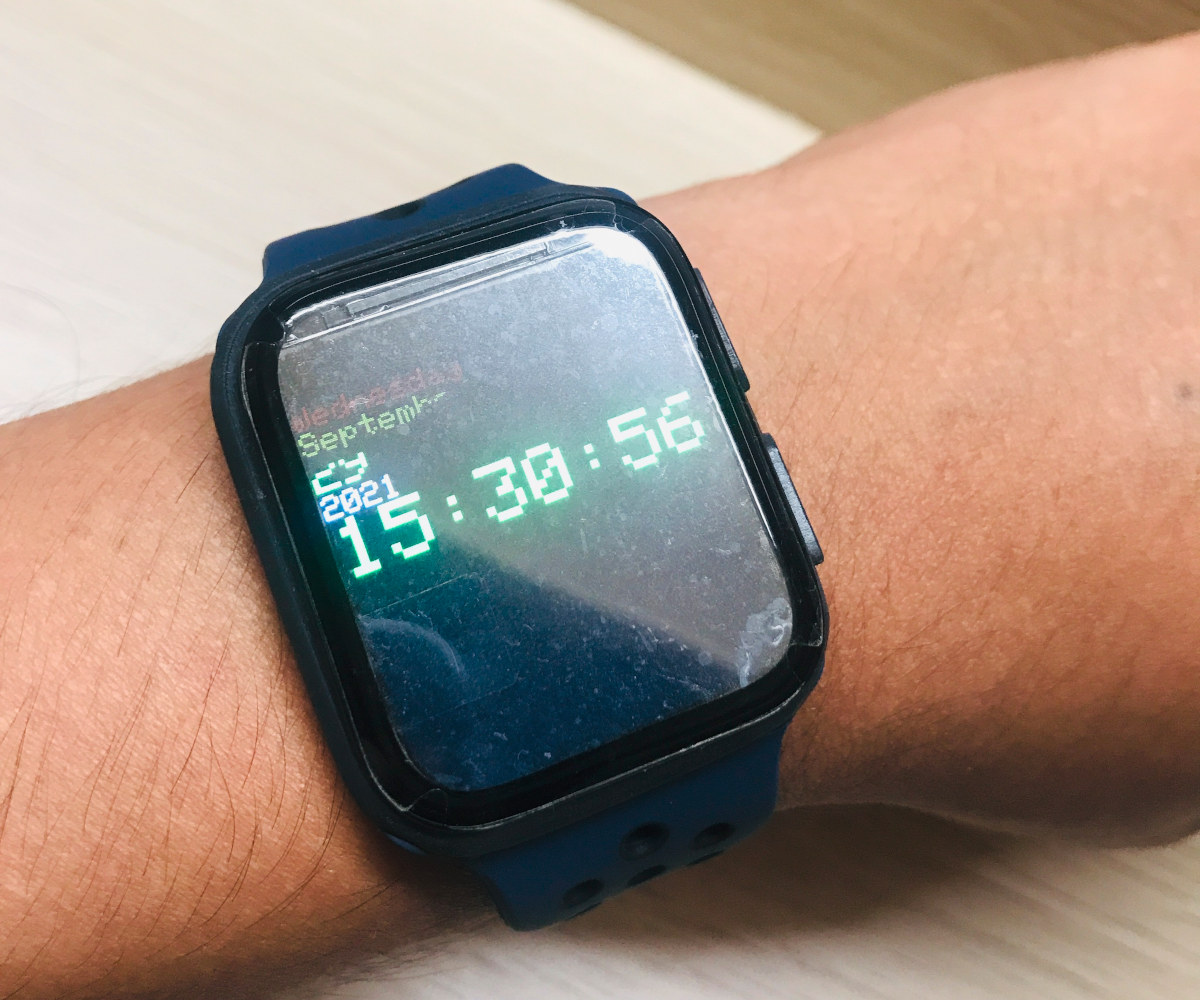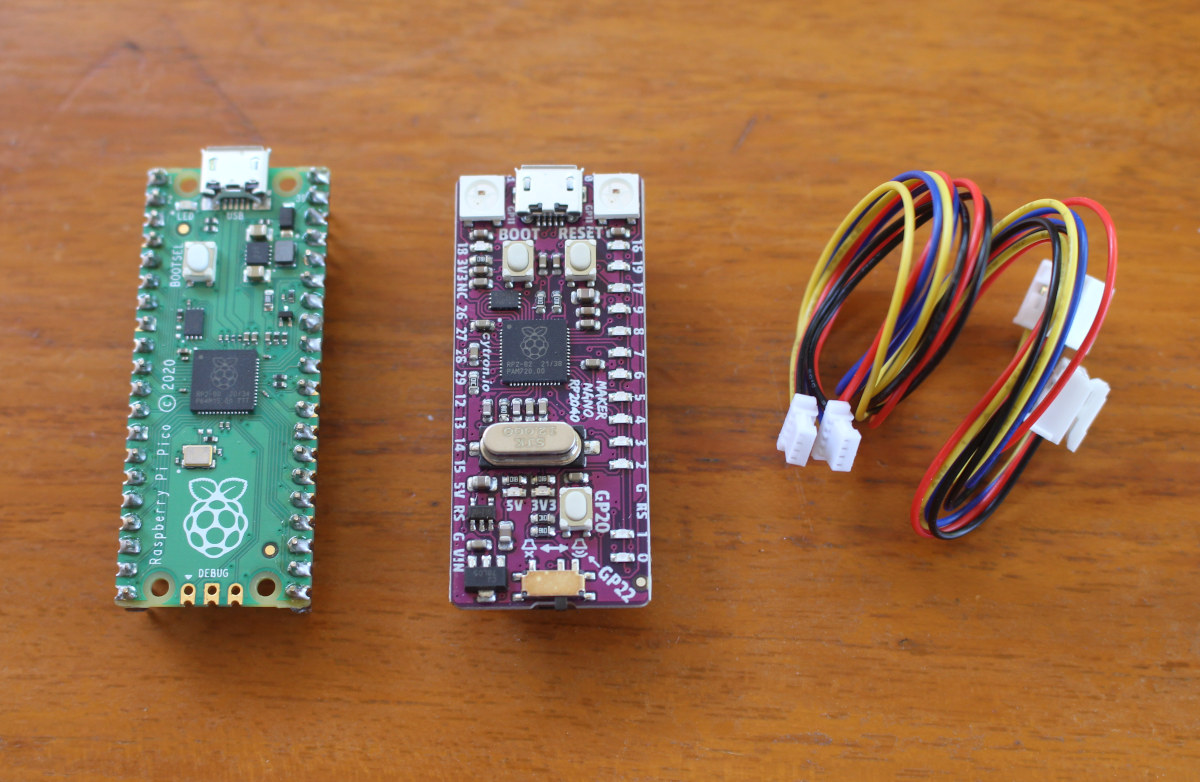M5Stamp C3U is an update of the M5Stamp C3 RISC-V IoT module with heat-resistant cover, support for WiFi 4 and Bluetooth 5.0, that does without CH9102 USB to TTL chip, relying instead on the internal USB interface of ESP32-C3 processor to handle serial programming of the firmware, and gaining on extra GPIO pin in the process. While several ESP32 processors come with a built-in USB interface, many boards still use an external USB to TTL chip such as CH340 or CP2102 to handle the serial interface used for debugging and flashing the firmware likely because of limitations when using ESP32-C3’s USB serial/JTAG controller console, but M5Stack probably considered those to be workable, and the small cost-saving beneficial. M5Stamp C3U specifications: WiSoC – ESP32-C3FH4 32-bit single-core RISC-V processor @ up to 160 MHz, with 384KB ROM, 400KB SRAM, 8KB RTC SRAM, 4MB embedded flash, WiFi and Bluetooth Connectivity 2.4 GHz WiFi […]
Challenger RP2040 LoRa board combines Raspberry Pi RP2040 MCU with RFM95W LoRa module
Invector Labs is now offering a variant of the WiFi-based Challenger RP2040 board with a LoRa radio. The Challenger RP2040 LoRa board features the Hope RF RFM95W LoRa radio transceiver module instead of the ESP8285 WiFi chip found in the original board. Raspberry Pi RP2040 has already been used in combination with a LoRa module, notably in Rakwireless RAK11300 WisDuo LPWAN module and the “LoRa Expansion for Pico“, a baseboard for Raspberry Pi Pico equipped with a LoRa module, but it’s the first time I see the combination in a development board form factor, which as a potential bonus following Adafruit Feather form factor. Challenger RP2040 LoRa board preliminary specifications: MCU – Raspberry Pi RP2040 dual-core Cortex-M0+ MCU @ 133MHz with 264KB SRAM Storage – 8MB flash Wireless module – Hope RF RFM95W connected via SPI channel and some GPIOs 168 dB maximum link budget. +20 dBm – 100 mW […]
DIY Raspberry Pi Zero 2 W handheld PC (mostly) makes use of off-the-shelf parts
The Penkesu Computer is a DIY handheld PC powered by a Raspberry Pi Zero 2 W SBC, and mostly comprised of off-the-shelf parts including a 7.9-inch display from Waveshare, replacement hinges for the Gameboy Advance SP, a 48-key mechanical keyboard fitted with Kailh low profile Choc V1 switches, and so on. Penk also happens to have designed the CutiePi tablet with Raspberry Pi CM4, and designed the Penkesu Computer (ペンケース in Japanese) as a side project without having to “worry too much about commercial viability” and as a way to remind himself why he started tinkering. Penkesu Computer handheld PC specifications: SBC – Raspberry Pi Zero 2 W with Broadcom RP3A0 SiP with Broadcom BCM2710A1 quad-core Cortex-A53 processor @ 1.0 GHz, 512MB RAM, MicroSD card slot Display – 7.9-inch IPS display with capacitive touch screen, 1280x 400 resolution, connected over HDMI via flat cable through an Adafruit adapter Keyboard – […]
CANFDuino – A Dual CAN Arduino based platform with enclosure, proto area (Crowdfunding)
CANFDuino is an Arduino-compatible dual CAN bus platform with CAN FD support that can be used for both prototyping and deployment on the field thanks to its rugged aluminum enclosure, two DB9 CAN connectors, an IO terminal block. The board is powered by a Microchip SAMC21G18A microcontroller with CAN-FD support, a MicroSD card slot, a micro USB port, various analog and digital I/O, as well as a prototyping area allowing users to solder their own components to the board if needed. CANFDuino specifications: MCU – Microchip SAMC21G18A Arm Cortex-M0+ microcontroller @ up to 64 MHz with 32KB SRAM, 256KB flash Storage – MicroSD card slot I/Os 2x DB9 connectors with CAN/CAN-FD up to 5 Mbps 12-way screw terminal block IO Through holes with 10x analog inputs Up to 24 digital IO w/14x PWM 2x UART (+1 UART2USB) 1x I2C,1x SPI 3.3V and 5V supplies Prototyping area for soldering extra […]
Round color LCD board comes in Raspberry Pi RP2040 or ESP8266 flavor (Crowdfunding)
Roundy is a board with a 1.28-inch round color LCD with 240 x 240 resolution that is offered with either a Raspberry Pi RP2040 MCU or an ESP-12E WiFi module, with the variants respectively called RoundyPi and RoundyFi. Both boards come with a micro USB port for power and programming, a button for flashing the firmware, and six pins with power signals and four GPIOs. One difference is that the Raspberry Pi RP2040 board includes a MicroSD card for data storage. Roundy specifications: MCU / module RoundyPi – Raspberry Pi RP2040 dual-core Cortex-M0+ microcontroller @ up to 133 MHz with 256KB SRAM RoundyFi – ESP-12E module with ESP8266 microcontroller @ up to 160 MHz with 160KB SRAM, 4MB SPI flash External storage (RoundyPi only) – MicroSD card socket Display – 1.28-inch round LCD with 240 x 240 resolution, 65k colors; GC9A01 SPI display driver. (It appears to be that model) […]
TTGO T-Block modular ESP32 devkit supports “Trolley” covers acting as display, buttons, sensor, proto area, etc…
When I first LilyGO TTGO T-Block ESP32 devkit with an enclosure and a display it reminded me of the M5Stack Core2 devkit, but it’s actually different as LilyGO designed a modular system that allows users to change the functionality of the top cover with expansion boards called “Trolleys”. That means TTGO T- Block can be fitted with a small e-Ink display, a prototyping cover, an RGB LED matrix, a small board that supports various MQ gas sensors, touch buttons, or a Trolley board equipped with headers compatible with common Arduino modules. TTGO T-Block Host 9102 preliminary specifications: WiSoC – ESP32 dual-core processor @ 240 MHz with 520KB SRAM, WiFi 4 and Bluetooth LE 4.2/5.x connectivity Memory – 8MB PSRAM Storage – 16MB SPI flash, MicroSD card slot USB – 1x USB Type-C for power and programming via CH2104 USB to TTL chip Trolley interface – 20-pin connector with 17x GPIO, […]
MutantW V1 – An open-source ESP32 smartwatch designed with Autodesk Fusion 360 and EAGLE
Rahmanshaber is known for its DIY Raspberry Pi handheld PCs such as MutantC v4, but MutantW V1 is a completely different device as an ESP32-based DIY open-source smartwatch that he designed with Autodesk Fusion 360 and EAGLE. The smartwatch is equipped with a 1.7-inch IPS LCD display (non-touch), two hardware buttons, a NeoPixel RGB LED, a vibration motor, as being powered by an ESP32 SoC offers both 2.4GHz WiFi 4 Bluetooth LE connectivity. MutantW V1 specifications: WIreless module – A.i. Thinker ESP32-S WiFi and Bluetooth module with ESP32 dual-core processor @ 240MHz with 520KB SRAM, 4MB SPI flash Display – 1.69-inch SPI IPS LCD display (ST7789 driver) with 280 x 240 resolution, scratch-resistant front glass. Note: no touchscreen Programming – Via 4-pin charging cable or OTA firmware upgrade Misc – 2x programmable buttons, NeoPixel RGB LED, vibration motor Battery – 3.7V/200mAh LiPo battery likely good for one or two days; […]
Maker Nano RP2040 offers Arduino Nano, Grove and Qwiic modules compatibility
Cytron Maker Nano RP2040 is board similar to Raspberry Pi Pico but with Arduino Nano form factor, a proper reset button, two RGB LEDs, single color LEDs for some GPIOs, a buzzer, as well as two Qwicc/STEMMA QT connectors that can also be used to connect Seeed Studio Grove modules using provided conversion cables. While the board mostly aims to be an Arduino Nano/Maker Nano upgrade, there are some notable differences with the I/O voltage being limited to 3.3V without 5V tolerance, and there are only four ADC inputs (A0 – A3) instead of eight on the Arduino Nano. Maker Nano RP2040 specifications: MCU – Raspberry Pi RP2040 dual-core Arm Cortex-M0+ microcontroller @ 125 MHz with 264KB internal RAM Storage – 2MB flash Audio – Piezo buzzer with mute switch Expansion 2x 15-pin headers with 22x GPIOs, 14x of which with LEDs,2x I2C, 2x UART, 2x SPI, 14x PWM, 4x […]


